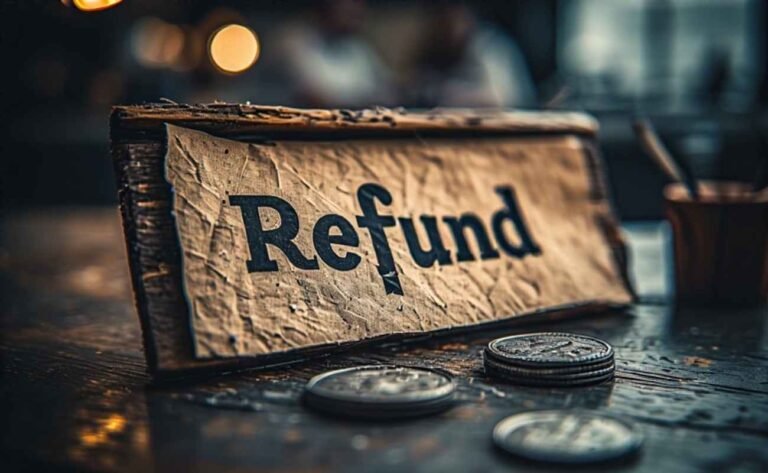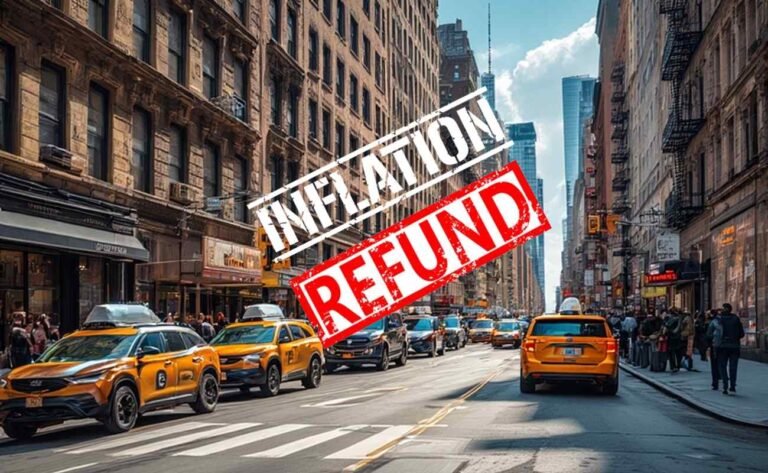$3000 IRS Refund July 2025: Your Complete Guide to Claiming It
The $3000 IRS refund July 2025 has been making waves across online platforms as taxpayers eagerly seek clarity on this potential financial boost. This refund, tied to specific IRS policies and economic relief measures, could provide significant support to eligible Americans. Whether you’re a single filer, a family, or a senior, understanding eligibility, application processes, and key deadlines is crucial to ensure you don’t miss out on this opportunity.
In this comprehensive guide, we break down everything you need to know about the $3000 IRS refund for July 2025, including eligibility criteria, application steps, and tips to maximize your refund, all presented in easy-to-read lists and tables for clarity.
The $3000 IRS refund July 2025 is not a one-size-fits-all payout but part of targeted IRS initiatives, potentially linked to tax credits, stimulus measures, or adjustments for inflation. While details are still emerging, this guide compiles the latest insights from reliable sources like the IRS official website and expert analyses to help you navigate the process. With clear eligibility guidelines, actionable steps, and common pitfalls to avoid, this article ensures you’re well-equipped to claim what’s rightfully yours. Let’s dive into the specifics with structured lists and tables to make this information accessible and actionable.
What Is the $3000 IRS Refund for July 2025?
The $3000 IRS refund July 2025 refers to a speculated tax refund or credit adjustment that may be available to eligible taxpayers as part of IRS policies or economic relief programs. While no official IRS announcement has confirmed a universal $3000 refund for July 2025, discussions on platforms like X and various financial blogs suggest it could be tied to expanded tax credits, such as the Earned Income Tax Credit (EITC), Child Tax Credit (CTC), or stimulus-like relief for specific groups. This section explores the potential sources of this refund and what it might mean for you.
Potential Sources of the $3000 IRS Refund
To understand the $3000 IRS tax refund July 2025, let’s look at the possible programs it could stem from:
- Earned Income Tax Credit (EITC): A refundable credit for low- to moderate-income workers, which could be adjusted for 2025 to reach up to $3000 for certain filers.
- Child Tax Credit (CTC): Families with qualifying children may see increased CTC amounts, potentially contributing to a $3000 refund.
- Economic Relief Payments: Speculation around stimulus-like payments, similar to the $1390 stimulus check 2025 guide, suggests targeted relief for specific groups.
- Inflation Adjustments: The IRS may adjust tax brackets or credits to account for inflation, boosting refunds for eligible taxpayers.
| Potential Program | Description | Estimated Refund Amount |
|---|---|---|
| Earned Income Tax Credit | Supports low- to moderate-income workers, especially those with dependents | Up to $3,000 for 2025 |
| Child Tax Credit | Provides relief for families with children under 17 | $2,000–$3,600 per child |
| Stimulus-Like Relief | One-time payments for economic hardship | Varies, potentially $3,000 |
| Inflation Adjustment Credits | Adjustments to tax brackets or credits to offset rising costs | Varies by income |
Why July 2025?
July 2025 is significant because it aligns with the IRS’s mid-year adjustment period for tax credits and relief payments. For example, the IRS often issues advance CTC payments or EITC adjustments around this time. Additionally, posts on X indicate public interest in a July 2025 IRS refund, suggesting it could be a targeted rollout for specific groups like seniors, low-income families, or those affected by economic shifts.
Who Is Eligible for the $3000 IRS Refund in July 2025?
Eligibility for the $3000 IRS refund July 2025 depends on the specific program tied to the refund. Below, we outline the likely criteria based on current IRS guidelines and emerging trends.
Eligibility Criteria for the $3000 IRS Refund
Here’s a detailed list of potential eligibility requirements:
- Income Thresholds:
- Single filers: Adjusted Gross Income (AGI) typically below $45,000 for EITC or similar credits.
- Married filing jointly: AGI under $75,000 for full benefits, with partial benefits up to $150,000.
- Low-income households may qualify for higher refunds.
- Dependents:
- Families with children under 17 may qualify for CTC-related refunds.
- Dependents must have valid Social Security Numbers (SSNs).
- Tax Filing Status:
- Must file a 2024 tax return (due April 2025) to qualify for most credits.
- Non-filers may need to use the IRS Non-Filer Tool for stimulus-like payments.
- Residency:
- Must be a U.S. resident for at least half the year.
- Certain states may have additional eligibility, similar to the $400 New York inflation relief check.
- Special Groups:
- Seniors over 65 may qualify for specific credits.
- Disabled individuals receiving Social Security Disability Insurance (SSDI) could be eligible.
| Eligibility Factor | Details | Relevant Program |
|---|---|---|
| Income Threshold | AGI below $45,000 (single) or $75,000 (joint) | EITC, CTC |
| Dependents | Children under 17 with valid SSNs | CTC, Stimulus Payments |
| Filing Status | Must file 2024 taxes or use Non-Filer Tool | All programs |
| Residency | U.S. resident for 6+ months | All programs |
| Special Groups | Seniors, disabled, or low-income individuals | Targeted relief programs |
Common Misconceptions About Eligibility
- Myth: Everyone gets a $3000 refund automatically.
- Fact: Refunds depend on specific criteria, and not all taxpayers qualify.
- Myth: Only families with children are eligible.
- Fact: Single filers and seniors may also qualify under programs like EITC.
For more details on eligibility, check the IRS official website at www.irs.gov for the latest updates.
How to Claim the $3000 IRS Refund in July 2025
Claiming the $3000 IRS refund for July 2025 requires proactive steps. Here’s a step-by-step guide to ensure you don’t miss out:
Step-by-Step Guide to Claim Your Refund
- File Your 2024 Taxes:
- Submit your tax return by April 15, 2025, to qualify for credits like EITC or CTC.
- Use tax software or a professional to maximize deductions.
- Check Eligibility for Credits:
- Review IRS guidelines for EITC, CTC, or other relevant programs.
- Use the IRS’s online eligibility tools for quick assessments.
- Monitor IRS Announcements:
- Follow the IRS newsroom at www.irs.gov/newsroom for updates on July 2025 refunds.
- Look for announcements about advance payments or stimulus-like programs.
- Update Your Information:
- Ensure your bank details are current with the IRS for direct deposits.
- Update your address if you’ve moved to avoid delays.
- Use the Non-Filer Tool (if applicable):
- Non-filers can register for stimulus-like payments via the IRS Non-Filer Tool.
- This is critical for low-income individuals who don’t typically file taxes.
- Avoid Scams:
- Be wary of phishing emails or calls claiming to offer the $3000 refund.
- Only use official IRS channels for information.
| Step | Action | Tips |
|---|---|---|
| File 2024 Taxes | Submit by April 15, 2025 | Use tax software |
| Check Eligibility | Review IRS criteria for EITC, CTC, etc. | Use IRS online tools |
| Monitor Announcements | Stay updated via IRS newsroom | Set email alerts |
| Update Information | Ensure bank and address details are current | Use IRS online portal |
| Use Non-Filer Tool | Register if you don’t file taxes | Check IRS website |
| Avoid Scams | Stick to official IRS channels | Report suspicious activity |
Personal Anecdote: My Experience with Tax Credits
Last year, I helped my cousin navigate the CTC process, and we were surprised by how straightforward it was once we had the right information. She updated her bank details through the IRS portal, checked her eligibility, and received her advance payment in July. It was a game-changer for her family’s summer budget, and I’m hoping the $3000 IRS refund July 2025 will be just as seamless for others.
Key Deadlines for the $3000 IRS Refund
Timing is critical when claiming the $3000 tax refund July 2025. Below are the key dates to watch:
- April 15, 2025: Deadline to file 2024 taxes to qualify for most credits.
- June 30, 2025: Likely cutoff for updating bank information for advance payments.
- July 15, 2025: Expected start of refund disbursements (based on past IRS patterns).
- December 31, 2025: Final deadline for claiming certain 2024 credits via amended returns.
| Date | Action | Notes |
|---|---|---|
| April 15, 2025 | File 2024 taxes | Mandatory for most credits |
| June 30, 2025 | Update bank details for direct deposits | Avoid delays |
| July 15, 2025 | Expected refund disbursement start | Monitor IRS updates |
| December 31, 2025 | Deadline for amended returns | For missed credits |
Tips to Maximize Your $3000 IRS Refund
To get the most out of the $3000 IRS refund July 2025, follow these practical tips:
- Claim All Eligible Credits:
- Double-check eligibility for EITC, CTC, and other credits.
- Use IRS tools or consult a tax professional.
- File Electronically:
- E-filing speeds up processing and reduces errors.
- Expect refunds within 21 days for electronic filings.
- Keep Records:
- Save all tax documents, including W-2s, 1099s, and receipts.
- These are crucial for audits or amended returns.
- Monitor State-Specific Relief:
- Some states, like New York, offer additional relief programs, as seen in the $400 inflation relief check guide.
- Plan Your Finances:
- Use the refund for high-priority expenses like debt repayment or emergency savings.
- Avoid spending before confirming eligibility.
| Tip | Why It Matters | Actionable Step |
|---|---|---|
| Claim All Credits | Increases total refund amount | Use IRS eligibility tools |
| File Electronically | Faster processing, fewer errors | Use IRS Free File |
| Keep Records | Protects against audits | Organize documents |
| Monitor State Relief | Additional financial support | Check state websites |
| Plan Finances | Maximizes refund’s impact | Create a budget plan |
Common Pitfalls to Avoid
When pursuing the $3000 IRS refund July 2025, steer clear of these mistakes:
- Missing Deadlines: Late filings can disqualify you from credits.
- Incorrect Information: Wrong bank details or SSNs can delay payments.
- Falling for Scams: Only trust IRS.gov for information.
- Not Checking State Programs: You might miss additional relief, like Alaska’s $1702 PFD guide.
FAQs About the $3000 IRS Refund July 2025
Below are answers to common questions about the $3000 IRS tax refund July 2025:
- Is the $3000 refund guaranteed for everyone?
- No, eligibility depends on income, dependents, and specific IRS programs.
- When will I receive the refund?
- Refunds typically start in July 2025, but check IRS updates for exact dates.
- Do I need to file taxes to get the refund?
- Yes, for most credits, but non-filers can use the IRS Non-Filer Tool.
- Can seniors qualify for the refund?
- Yes, seniors may qualify for EITC or other targeted relief programs.
| Question | Answer | Additional Info |
|---|---|---|
| Is it guaranteed? | No, depends on eligibility | Check IRS criteria |
| When will I receive it? | Likely July 2025 | Monitor IRS newsroom |
| Need to file taxes? | Yes, or use Non-Filer Tool | File by April 15, 2025 |
| Seniors eligible? | Yes, for specific programs | Review EITC guidelines |
Why This Refund Matters
The $3000 IRS refund July 2025 could be a lifeline for many Americans facing rising costs. Whether it’s paying off debt, covering school expenses, or building savings, this refund can make a tangible difference. By staying informed, filing on time, and avoiding scams, you can maximize your chances of receiving this financial boost.







